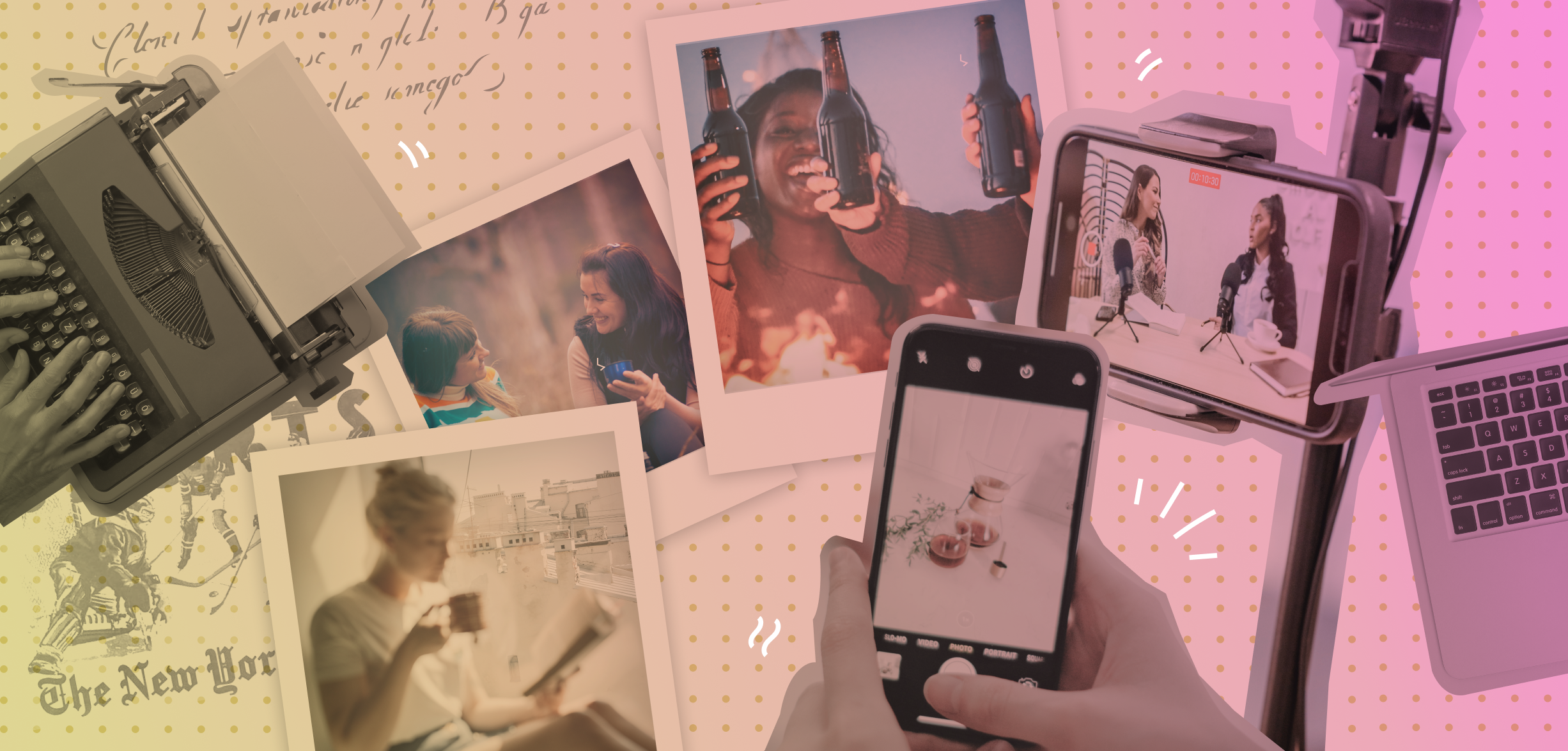From the fires of prehistoric times to the data-driven digital platforms of the 21st century, sharing stories remains central to human experience. Storytelling is important; it spans diverse cultures, transcends the ravages of time, and continues to redefine itself in an ever-evolving digital landscape. Yet, in a world brimming with information, the question remains: Does authentic storytelling still hold power in the realm of brand marketing?
Traditional wisdom sees storytelling as an elusive art – an enigma that can’t be packaged, structured, or replicated. However, in our quest to help brands craft narratives that resonate, we at Tailorie have begun to question these norms. Our approach combines art and science to disrupt conventional storytelling wisdom, introducing a fresh perspective that can help brands make meaningful connections with their audiences.
Psychological research and neuroscience provide us with fascinating insights. Stories stimulate our brains, not just in the language processing parts, but all over. Our neurons engage beyond their basic mechanics, enabling us to feel, perceive, and respond as if we were part of the narrative. A 2021 Stanford study on “Narrative Persuasion” advocates for authentic, memorable, and persuasive narratives. Why is storytelling important? This research suggests that stories focusing on mundane, everyday events but containing a “disruption” in the narrative are more engaging.
Reflecting on this study, it’s hard not to mention the ‘Dollar Shave Club,’ an initially unknown startup that disrupted storytelling norms with its unconventional launch video. The brand captured the attention and garnered over 26 million views, proving that storytelling doesn’t always need to follow a predetermined formula.
It’s often the everyday experiences that resonate most with audiences. When people share personal stories, they often begin with “You won’t believe what happened to me today…” or “Guess what I saw on my way home…” Your brand’s narrative doesn’t always have to revolve around grandiose events. An observation from daily life, with an element of surprise or a touch of humor, can be far more relatable and engaging.

Don’t go overboard. The disruption doesn’t need to be dramatic or drastic. It can be a minor deviation from the expected, a surprising fact, or an unexpected insight. The key is to make it authentic and true to your brand. It shouldn’t feel forced or fabricated.
As we traverse the landscape of marketing, a fascinating pattern begins to emerge, one that is particularly pronounced in the retail sector. Products don’t merely exist as standalone items; instead, they are often enveloped in narratives that grant them a rich, vibrant life beyond their physical form. This transformation is not accidental – it’s the result of thoughtful, deliberate storytelling.
From my experience in the retail industry, I’ve witnessed the undeniable power of storytelling firsthand. A simple product, whether a hand-woven scarf or a meticulously crafted piece of furniture, ascends to an entirely new plane of perception when adorned with a story. No longer just an object, it becomes a vessel carrying a tale, a conversation piece that invites the consumer into a narrative realm.
Take for instance a coffee table. On its own, it’s a functional piece of furniture, something around which friends and family might gather. But, imbue it with a narrative – a tale of reclaimed wood sourced from a century-old barn, crafted by local artisans who’ve spent years perfecting their skills – and suddenly, it’s no longer just a table. It’s a symbol of sustainability, a testament to craftsmanship, a piece of history resting in the middle of your living room.

This phenomenon isn’t merely anecdotal; scientific studies back up the power of storytelling in marketing. Research has consistently shown that stories are more memorable than facts alone. A study by Jennifer Aaker, a professor of marketing at the Stanford Graduate School of Business, found that stories are remembered up to 22 times more than facts alone. Moreover, the emotional engagement sparked by a narrative greatly enhances a consumer’s connection with a brand, leading to higher brand recall and loyalty.
This extends to the world of advertising as well. According to a 2020 analysis by marketing technology company IPG Media Lab, narrative ads outperformed product-focused ads in every key metric, including brand recall, message memorability, and purchase intent. This study reaffirms the potency of storytelling at a transactional level – narratives don’t just add an abstract value to products; they directly contribute to their commercial success.
At Tailorie, we understand and leverage this power of narrative. But we don’t stop at the product level. We delve deeper, weaving narratives that encompass not just individual products but entire brands, enabling them to form meaningful, lasting relationships with their consumers. By fusing data-driven insights with the art of storytelling, we ensure that these narratives resonate with the right audience, at the right time, in the right way.
In essence, storytelling is more than a marketing tool. It’s a fundamental human experience, a way to make sense of the world around us. And when brands can tap into this primal instinct, they don’t just sell products – they create experiences, spark emotions, and build communities. That’s the true power of storytelling in marketing.
Yet, as we venture further into the digital age, the rules of engagement have changed. Our attention spans, bombarded by a constant stream of social media posts and digital content, are dwindling. Brands face the challenge of not just telling stories but crafting narratives that stand out, compel and linger in the minds of their audience.
Our fast-paced lives are increasingly getting integrated with digital platforms, which themselves are evolving. Emerging technologies like artificial intelligence, augmented reality, and virtual reality are reshaping the landscape of storytelling. They offer the potential to make narratives more immersive and interactive, expanding the boundaries of audience engagement.
The challenge for brands is translating the human tendency to share stories into the digital world. A great way to do this is to humanize your brand. Show the faces behind the brand, share behind-the-scenes stories, and engage with your audience in a more personal, authentic way.

However, amidst this technological whirlwind, it is crucial to remember the heart of storytelling: genuine human connection. As I often reflect, ads without substance feel like bad pick-up lines – they may capture momentary attention but fail to forge a lasting connection.
Looking ahead, the future is brimming with thrilling possibilities. Consumer behavior is shifting – from passive recipients; people are becoming active participants, seeking meaningful, engaging content. They are embracing brands that echo their values, tell stories that resonate with their own, and offer something beyond the superficial. In the coming years, brands will have to master the art of narrative disruption, creating stories that are authentic, challenging, and profoundly human.

The enduring power of storytelling lies not in its grandeur or sophistication but in its ability to reveal the extraordinary in the ordinary. Regardless of the medium or technology, authentic narratives will continue to captivate hearts, challenge norms, and change perspectives. In our fast-paced, digital world, the courage to tell such stories could very well be the most potent tool a brand can wield. After all, the most captivating stories often come from the most unexpected places.





